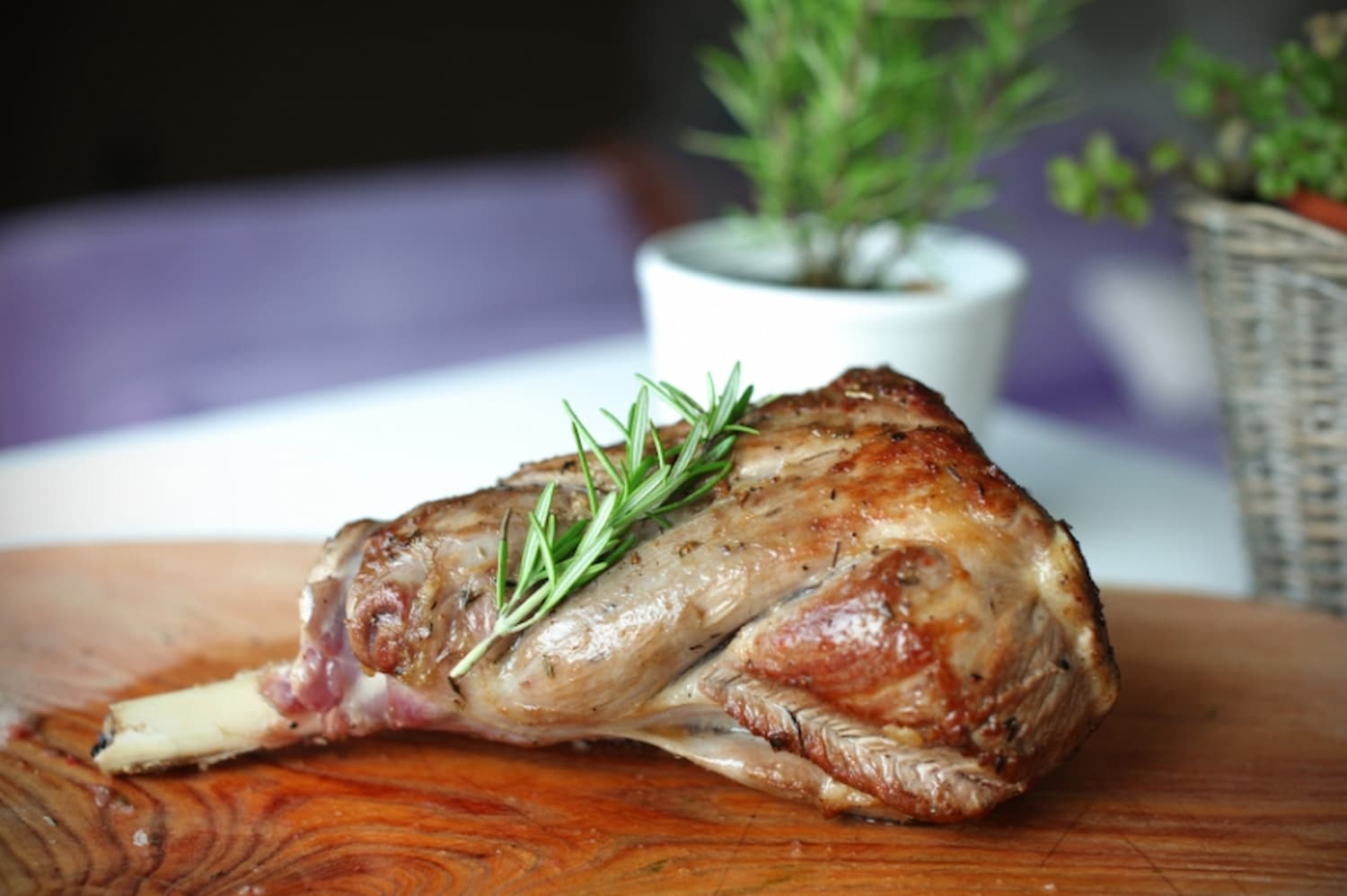
Slow cooking lamb meat allows the spices and flavour of the cuts of meat to soak into the whole dish, giving it a juicy, savoury taste. There are different methods of cooking lamb, but this recipe is an absolute feast for relatively minimal effort! The flavour and texture of this dish are simply to die for and they never ever disappoint.
A Brief History of Slow-Cooked Lamb
Lamb, slow cooked over open flames, was introduced to many cultures by nomadic and transhumant groups in prehistoric times. The technique was later refined and adapted to local foods and tastes in different regions throughout history. Slow cooking lamb with spices, vegetables and wine spread from Morocco across all of North Africa. It gave way to porchetta — an Italian slow roasted pork wrapped in the skin, which then ultimately transformed into the modern day porchetta sandwich.
Slow-cooked lamb with rice became popular throughout Eastern Europe and West Asia, while slow-cooked legume dishes made their way from Iberia to Morocco through the Moors in Spain.
Many versions of slow-cooked meat eventually came about, with fish, chicken or beef used in place of lamb. As you can see, slow cooking techniques such as roasting, stewing and braising have been around for centuries. These techniques gave way to many classic slow cooker recipes that we still make today; slow cooking lamb is just one of them.
Source: New Zealand Spring Lamb
The Benefits of Slow Cooking Lamb
Slow cooking is one way to prepare meat without drying it out. Cooking for extended periods of time allows the acidic ingredients, such as orange juice, lemon juice or balsamic vinegar, to break down the connective tissues in the meat's muscles, which is what makes slow cooker meals so tender and flavourful. Slow cooking essentially dissolves the fat and softens the muscle fibres, resulting in tender lamb.
Because slow-cooked lamb has a more delicate flavour than other meats, it tends to go well with a large variety of seasonings, herbs, vegetables and spices, which add to the depth of flavour.
On the nutritional aspect, slow-cooked lamb is high in protein, niacin, selenium and B-vitamins. In addition, slow cooking lamb has been shown to decrease plaque formation on teeth by preventing acid from forming from bacteria in the mouth. Cooking lamb slowly also helps your body absorb more iron.
How to Cook Slow-Cooked Lamb
It is ideal to marinade the lamb overnight to get tender meat, but this is not essential and you will still yield delicious results without this step. Make sure you are not too far from the oven on the day, as you’ll need to baste the lamb hourly. Serve with flatbread or rustic potato wedges, peas and a crunchy salad.
Note:
Some people prefer a less fatty dish. If so, pour the cooking liquid into a jug and re-cover the lamb with foil. Leave the liquid to stand for about 10-15 minutes or until the fat has solidified at the top. Scoop off the fat and add the remaining liquid to the lamb.
The next time you think about making a lamb dish, consider slow-cooked lamb and these tips. Not only will your body thank you but your taste buds will too.
Ingredients
- 1 2.5-3kg lamb shanks or lamb shoulder (on the bone)
- 3 oranges, juiced (keep the peel of 2)
- 2 tablespoons honey
- 2 tablespoons tamari
- 2-3 rosemary sprigs, leaves roughly picked
- 3 garlic cloves, smashed
- Fine sea salt & black pepper to taste
- 2 tablespoons olive oil
- 3 onions, quartered
- Peel of 2 oranges
Instructions
- Place the lamb shoulder in a baking dish fat side up. With a sharp knife, score the lamb at roughly every three centimetres, cutting halfway through the fat.
- To make the marinade, whisk the orange juice, honey and tamari in a bowl and pour over the lamb. Add the rosemary and garlic, ensuring that you get some into the slashes you have made. Throw in the orange peel.
- If marinating, simply cover with cling wrap and refrigerate overnight. I do prefer to marinade in a baking dish just big enough to hold the lamb shoulder, so that it is well covered. When it’s time to cook, I transfer it to a larger dish.
- Preheat the oven to 250°C.
- Drizzle the olive oil over the lamb and let it stand at room temperature for 30-45 minutes.
- Cover the baking dish with two layers of tin foil, ensuring a good seal. Place lamb on the top rack of the oven and immediately turn the temperature down to 150°C.
- Roast for five hours, basting hourly.
- Remove foil and roast for another 30 minutes, basting if you notice that it is drying up.









